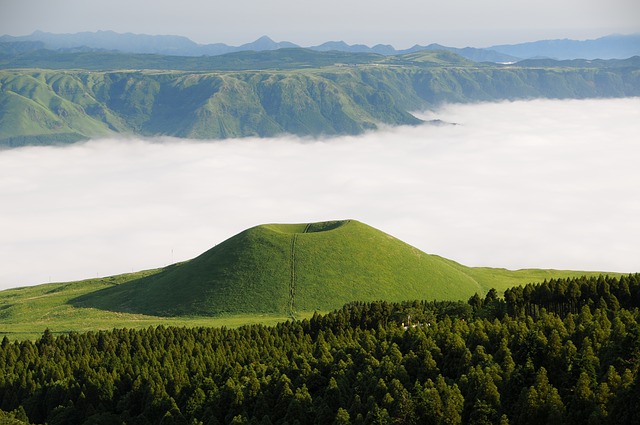Backpacking in Japan
How often do travel articles mention a country or a place of contrasts? But only in the case of Japan does this expression fully apply. Old meets new. Modern joins antiquity. Hypermodern technology stands alongside ancient craftsmanship. The sea is just as present as the mountains and cold changes with hot. Japan stands for all this and much more. To this day, Japan has not developed into a tourist magnet despite the best infrastructural conditions plus spectacular geographical and architectural highlights.
It cannot be due to the prices. Anyone who compares prices intensively for backpacking in Japan will find that the cost of living and travel in the island kingdom is no more expensive than in Australia, Western Europe or the USA. According to a consumption index, prices are around 75 of New York costs. Clever backpackers nevertheless travel the country with numerous train and bus passes offering discounted transport options.
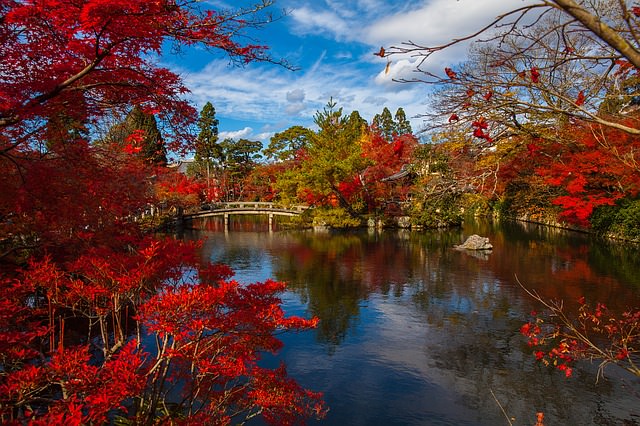
Backpacking in Japan – Garden with lake
And as far as accommodation and meals are concerned, you don’t have to flip out more than in Rome, Berlin or London for a bed and a meal. Experience the varied Japanese cuisine, which focuses on fish (unfortunately also whales and dolphins etc.), seafood, vegetables and soy – lots of soy – tofu and other delicacies. The Japanese, by the way, are getting very old. And this probably because of their healthy protein-rich and low-fat diet.
Perhaps it is homogeneous Japan that keeps visitors away. 99 percent of the inhabitants are pure-bred. But this does not mean that they are xenophobic. However, it is definitely worth discovering the country, because Japan is cult, trendy, cool, lively and also old fashioned. Manga, Hello Kitty, Sony, Mazda and many other brands come from the realm of the rising sun. The country has no direct mainland connection.
Rather it consists of scarcely 7000 more or less large islands, which are rather densely populated. About 126 million Japanese crowd on a small territory. The locals live in cramped conditions hardly imaginable for Western Europeans. But comfort is not sacrificed. Japan is a global pioneer in the toilet industry. Those who have to go to the toilet can choose from up to 30 different flushing functions.
Technology wherever you look. The fastest trains race through the country, the best sound systems sound out of the karaoke bars and whoever has a technical demand for iPods, iPads and whatever else will get it satisfied. Every day masses of people push their way through the streets of the capital Tokyo and others. Glitter, glamour, nightlife, bars, Karakokee and sex around the clock. But it can also be more comfortable and even quite contemplative in the country.
But you have to go out to the country, where you usually don’t meet many tourists anymore. A visit to Japan includes a detour to the mega-cities Tokyo, Kyoto, Ōsaka and Kanazawa. Don’t miss the Shiretoko National Park in Hokkaido, which belongs to the UNESCO cultural heritage. And take a trip to the subtropical climate of Okinawa Island in the south. The Futschijama is the landmark of the country.
If you like more mountains, snow and cold, then the so-called Japanese Alps in Honshu are a worthwhile destination. You should also visit Miyajima, Matsushima Bay or the rural Tōno as well as the old Hakodate. You can party hard in the beer town of Sapporo. The famous snow festival also takes place there every year.
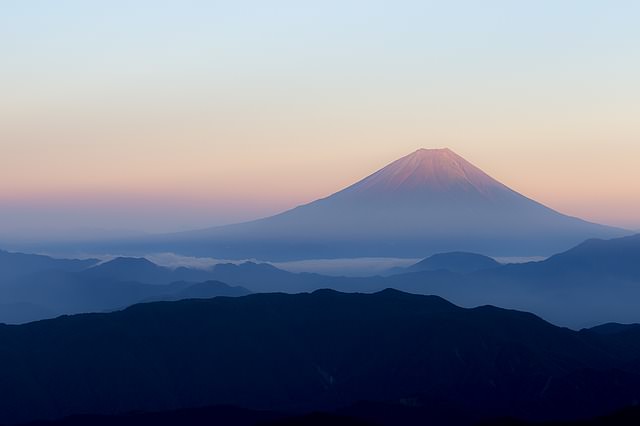
Backpacking in Japan – mt fuji
Culture in Japan
The younger Japanese culture goes back a little more than 2,000 years. Human traces, however, have been present in the region for 50,000 years. You will have to adapt to many classical rituals, especially if you are invited privately. At home, tradition determines the daily routine.
The Japanese, however, have managed to rise in only 2-3 generations from a state closed off from the outside world to one of the most modern, without entering into conflicts with neighbors. Japan has always done this in the past. The Japanese mentality is influenced by Shinto and Buddhism. You can usually only talk to the locals in English in the big cities. In the country almost only Ainu and Ryukyuan are spoken.
Backpacker Route in Japan
Why Japan is not a backpacker country is hard to understand. There are a lot of sightseeings. In addition a lot of nightlife and adventure and a lot of, super much culture. You can watch, swim, climb, ski, toboggan and whatever. Discover old and new while backpacking through Japan and enjoy the delicacies. They say it takes 14 days to explore Tokyo intensively. Let’s take a look at the top highlights in Japan.
Route 1: The classic (15-20 days)
- 1- 7 days visit castles Uwajima Castle, Matsuyama Castle, Kochi Castle and many more in the castle and castle region of Kumamoto.
- 3 days Tokyo, explore the capital. Shopping total is announced.
- 3 days experience ice-cold Hokkaido with its uninhabited expanses.
- 2 days to visit the historic city of Kanazawa.
- 2 days cultural metropolis Kyoto, the former capital of Japan get to know.
- 2 days to visit the three sacred mountains Dewa Sanzan.
- 3 days to be impressed by the panorama of the Japanese Alps in Honshu.
- Experience 2 days of untouched nature in Shiretoko National Park.
- 3 days beach, beauty, diving, jungle on the Yaeyama Islands enjoy.
- 1 day to visit the Sakurajima volcano. It is considered one of the most active volcanoes in the world.
- 1 day to discover 1000 year old trees in Yakushima.
Route 2: Backpacker Intensive Trip (up to 40 days and more)
- 1- 7 days visit castles Uwajima Castle, Matsuyama Castle, Kochi Castle and many more in the Kumamoto castle region.
- 3 days Tokyo, explore the capital. Shopping total is announced.
- Experience 3 days of ice-cold Hokkaido with its uninhabited expanses.
- 2 days to visit the historic city of Kanazawa.
- 2 days cultural metropolis Kyoto, the former capital of Japan get to know.
- 2 days to visit the three sacred mountains Dewa Sanzan.
- 3 days to be impressed by the panorama of the Japanese Alps in Honshu.
- Experience 2 days of untouched nature in Shiretoko National Park.
- 3 days beach, beauty, diving, jungle on the Yaeyama Islands enjoy.
- 1 day to visit the Sakurajima volcano. It is considered one of the most active volcanoes in the world.
- 1 day to discover 1000 year old trees in Yakushima.
- 3 days trekking and hiking in Aso-san.
- 2 days to visit Hiroshima and Nagasaki and the consequences of the A-bombs in museums.
- 1 day visiting Buddhists in Mount Koya.
- 1 day getting to know Miyajima.
- 2 days celebrating and shopping in Sapporo. Especially in winter there is a lot going on.
- 2 days on the former prison island Sado Island, which is today a nice bathing resort.
- 1 day to visit the pearl divers of Shima at Hantō
- 1 day to get to know the most beautiful castle of Japan, Himeji-jō.
Travel times in Japan
What is a good time to travel to Japan? This question cannot be answered in general terms, as Japan has a diverse climate ranging from a Nordic ice climate to subtropical beach and jungle temperatures. Those who prefer warmer temperatures on the whole island terrain have to go there in the European summer. Those who like it cold will go there in winter. That’s how easy it is in Japan. The further north, the shorter the summers. Also like in Europe And the higher, the more snow. You also know it from somewhere.
Backpacker Budget in Japan
Japan is certainly not the cheapest backpacker and travel destination, but it is not as expensive as is always claimed. If you take a look at the price and consumption index at numbeo, you will see that the index is around 70 percent of New York’s consumption costs. This means that overnight stays, public transport, but also supplies and fun are much cheaper than in the Big Apple or many European megacities.
You pay in Japan with the Yen. 1000 Yen is around 7 Euro (mid-2015). Of course, you don’t get cheap meals at street stalls for one euro in Japan. But a small meal in a simple restaurant doesn’t cost more than 3-5 Euros. For a McMeal you pay a little less. Half a litre of local beer costs 2 euros. Import beer one third more. A cappuccino costs the same. For 1.5 liters of water from the bottle you pay one euro.
The overnight stay in a dorm in a hostel costs as much as in Berlin, Paris or London. There are however other options in Japan, which you get introduced under the point “Backpacker accommodations in Japan”.
Transport costs in Japan
You pay stupidly for your backpacking trip through Japan if you don’t use the offers. For travelers, there are numerous economy passes available for buses and trains and for flights. By the way, you’ll enjoy an amazing level of comfort when travelling through the country. And if you wish, you can even travel super fast.
A local bus ticket costs around 2 euros – easy. A monthly pass of around 100 euros. Taxi driving is expensive. The starting fare is 6 – 7 Euro and then 3 Euro per kilometre is added.
Bus driving in Japan
Bus travel is an option in Japan, because the tickets are relatively cheap and the service is upscale. The providers are Star Express, Willer Express, Kansai Bus and the companies of JR Rail Pass. Some bus tickets from JR Rail Pass can also be used in the bus. If you want to drive more buses, you should get the Japan Bus Pass. The passport can be purchased at willerexpress.com at various prices and conditions.
Domestic fares in Japan
Flying is not cheap in Japan. Check out the deals with Japan Airlines and All Nippon Airways on their homepages. There are special tourist passes that can only be purchased on international flights. The Japan Passes offers several cheap domestic flights. Other smaller national airlines with possibly good offers are Skymark Airlines and StarFlyer.
Rail travel in Japan
Japan is a railway country. The first high-speed trains were already speeding through the country when steam locomotives were still running in Germany. You can find out which train connections there are and what the individual routes cost at hyperdia.com. You can also check out jorudan.co.jp. Seat reservations are possible online. Get the Japan Rail Pass, otherwise train travel can be expensive.
You can have your passport issued on the website japanrailpass.net for different long periods. You can only buy the passport from abroad. There are also restrictions on some trains. Also look around for regional passports in the different regions. There are JR Hokkaido Rail Pass, Tohoku – JR East Rail Pass, Chubu – Shinkansen Tourist Pass, JR West San’yo Area Pass and at least Shikoku Free Kippu and Kyushu Rail Pass. If you really want to save on backpacker travel through Japan, take the Seishun 18 Ticket or the Hokkaido and Higashi-Nihon Pass. The passports you have to pay cash on the spot.
Cheap types of travel are also the thumb, which is not a problem in Japan, and the bicycle. However, biking in the cities is not exactly fun.
Backpacker Accommodation in Japan
You can’t expect overnight prices like in backpacker countries in Southeast Asia in Japan. Orient yourself more on European and North American prices. As far as types of accommodation are concerned, you can enjoy a few unusual concepts during your backpacking trip. But first of all to the hostels. At Hostelworld you will always find a list with the average prices for a bed in a dorm in the most important cities. So you have an approximate overview of the price range. In June 2015 the prices for a bed were as follows
- €19.04 Tokyo
- €41.36 Kyoto
- €15.86 Osaka
- €13.60 Hiroshima
- €18.39 Nara
- €22.08 Fukuoka City
- €20.51 Nagoya
- €22.31 Sapporo
- €23.12 Mount Fuji
- €14.55 Okinawa
Not cheap, but good service throughout. In Japan you can also look for accommodation in Love Hotels or Capsule Hotels. Backpacker experience has shown that it is better to use a local booking service for accommodation where English is spoken. The Japanese do not like to embarrass themselves and therefore often refuse accommodation.
When booking hotel rooms, make sure that the price is often per person and not per room. Clarify beforehand! If you want to sleep in a room of 1 x 1 x 2 meters in a capsule hotel, you have to pay about 30 Euro. But you must have had the experience once. It’s always worth it, because massages, sauna and other amenities are usually included.
Love hotels are exactly what the word says. And that’s exactly what it offers. For 50 Euros you already have a bed and a little more – at least for a few hours. Also a varied experience. More exclusive, but far more romantic and ethnic are the traditional Japanese Ryokan accommodations.
If you can’t afford it, but at least prefer a similar style, you can stay overnight in a Minshuku. The original Japanese flair costs between 3000 and 5000 yen including several meals. Even cheaper are the state Kokuminshukushas. And if you are on a pilgrimage tour, then the Shukubōs in the temple complex will also welcome you.
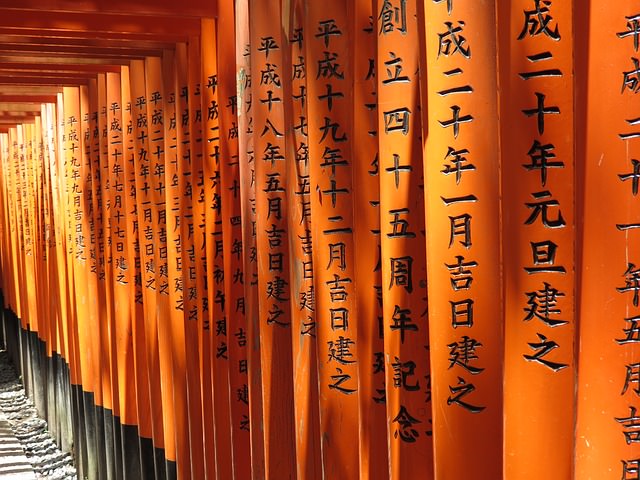
Backpacking in Japan – Culture and writing
Camping in Japan and Outdoor
Something quite unusual in terms of accommodation is the so-called nojuku. Bang you wherever you want without a tent. Usually nothing happens. In Japan this kind of travelling and staying overnight is a cult among young people. Even camping is full in. Back to the nature is also very popular among Japanese backpackers. There are campsites all over the country. Look for trips and tips on the site jnto.go.jp.
Backpacker Trips & Tips in Japan
Backpacking through Japan you will encounter modern mega-cities, ancient temples and castles, gigantic mountain massifs, romantic villages and lots of water. One of the absolute highlights is certainly a visit to the Kinkaku-ji, also known as the Golden Pavilion Temple. Take a look at the 3700 m high Futschijama and be impressed by the dimensions of the imperial palace.
Himeji Castle is considered one of the most beautiful in the country. The snow monkeys in Jigokudani Monkey Park are definitely funny to watch. And at the Hiroshima Peace Memorial you will become aware of what man is capable of in his madness. Check out the official Japan Tourism website jnto.go.jp for some exciting travel ideas. There you’ll also find current travel news from the country, which could be quite useful.
Backpacker Highlights in Japan
You can only experience the Japan highlight in terms of natural beauty during the cherry tree blossom season. Then Japan will blossom in the truest sense of the word. Famous for it are the Yachounomori Garden in Tatebayashi and the Kitanomaru Park. Take part in a sake rice wine ritual and get to know the Japanese culture. By the way, you will also discover them in the many public and private bathhouses.
You have to sing karaoke in one of the many clubs. Then you should definitely spend the night in one of the traditional Japanese hostels on your backpacker tour, which are described under “Backpacker Accommodations in Japan”. If you know the Japanese board game Go, you will surely quickly find local friends. Backpackers, who want to get more involved in Japanese culture, stay overnight in a temple and take part in the meditation courses of the monks.
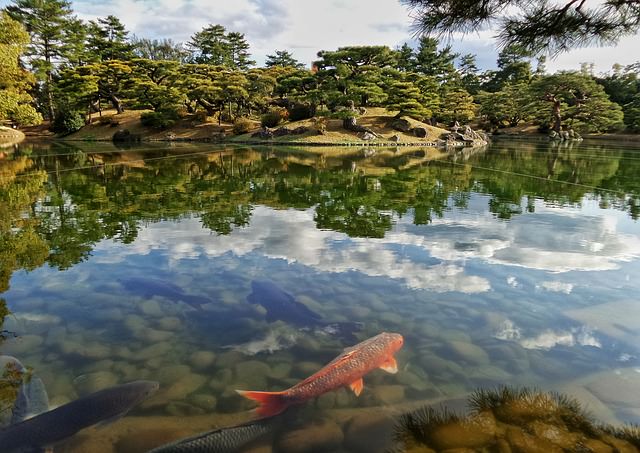
Backpacking in Japan – Nature
Backpacker Insider Tips in Japan
One of the insider tips is that you can spend the night practically anywhere in the wilderness without a tent or equipment. This is an absolute cult among the Japanese. You don’t have to worry about safety. A good mockery for this is Kenrokuen in Kanazawa or you can do it on Mount Aso under 1000 year old trees. The harder among you can also enjoy the snow-covered mountains in the Daisetsuzan National Park pure outdoor.
River rafting is popular in the Iya Valley. And if you want to go on a spiritual trip, we recommend the 88 Temple Pilgrimage Tour via Shikoku. However, you should bring some time with you, because the route stretches over 1.647 km. Almost only Japanese visit Mt. Yotei. Skiing and tobogganing good, is on the program there in Hokkaido. An optical sensation are the Furano Flower Fields at their heyday. The ancient Ryukyu culture can be discovered in Okinawa. There you can also pay a lot of attention. An absolute natural wonder is the Minainotaki waterfall in Kyushu.
Food & Drinks in Japan
Japanese cuisine consists of much more than sushi. However, the raw fish wrapped in rice is rarely eaten by the Japanese themselves. Raw fish is an expensive food that is rather eaten in high circles. Rice is the basis. And soya in all its variations. Vegetables cooked fish, meat and tofu are further components of Japanese cuisine. Anyone who always wants to go on a diet will inevitably do so on a backpacker trip through Japan, because hardly any people eats less fat. This is probably one of the reasons why the Japanese get so old.
Food in Japan
What the locals eat a lot is the obentō. It is an all-purpose weapon against hunger at every opportunity made of nori, rice, seaweed, fish and other ingredients. Udon is the most popular type of pasta. Really thick, wide strips of wheat flour are the most popular. The thin equivalent is also available in the form of glass noodles. The nattōs are not everyone’s cup of tea. These are fermented, yellow beans. A taste sensation are the salty pickled umeboshi plums. In any case, meat, fish and plant eaters get their money’s worth. It would be a shame to go to a fast food restaurant for the varied cuisine. There are of course also. But the diet is then gone.
Drinks in Japan
The selection of drinks in Japan is as varied as the food on offer. The most popular drink is tea. There are numerous varieties that you can try. In Japan, almost everything is drunk, whether with or without alcohol. If you want gas, you have to be at least 20 years old. Right behind the tea comes the sake. It’s the famous Japanese rice wine that doesn’t take effect at the first sip. But at some point the 15 per cent alcohol will be a powerful hit. However, drinking sake is cult in Japan.
This means that you should follow the rituals. Shōchū is the harder version of the shake. The Alk-Granate can be brewed from rice, yam and other cereals. Japan is a beer culture. Even if you don’t believe it. Sapporo is considered the beer capital of the nation. All local beer brands are ok throughout. When it comes to backpacking, you don’t have to do without your beloved coffee. And fruit juices are also available in all imaginable variations.
Backpacker Visa and Vaccinations in Japan
Entering Japan is not a big problem for German citizens. According to the German Foreign Office, as a backpacker entering Japan, you do not need a visa for a stay of up to 180 days. But you must present one of the following documents.
- Passport: Yes
- Provisional Passport: Yes
- Identity Card: No
- Temporary Identity Card: No
- Children’s passport: Yes
Still valid child ID according to old model: Yes. However, each child needs his or her own ID card. Make sure that you always carry a new travel document that has never been reported missing. Because at the Japanese border you can get a lot of stress with such a document at the entry.
Vaccinations & medical advice
Although Japan has a temperate climate, dengue outbreaks can occur in the subtropical regions in the south. You should have a measles mumps rubella vaccine because rubella is known in Japan. In any case, you can feel safe in Japan when it comes to medical care. At least European standards await you.

